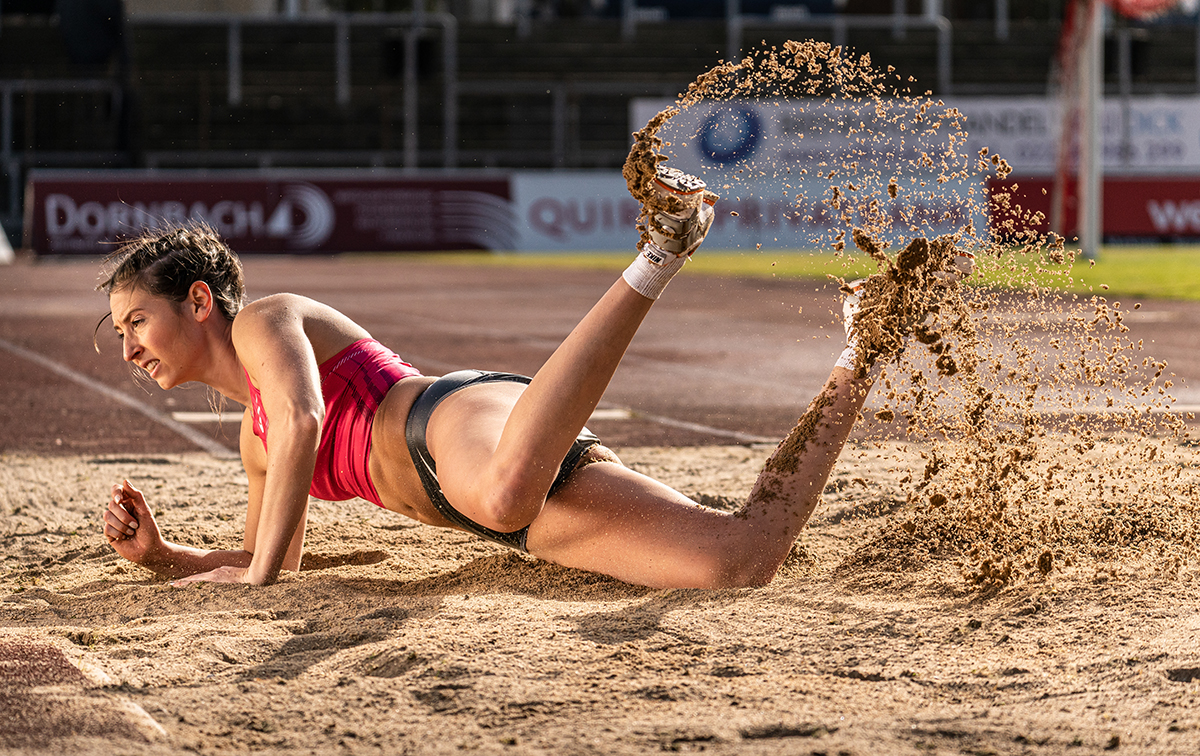Conhecer como segurar um telefoto lente é essencial para capturar imagens nítidas e sem desfoque, especialmente ao fotografar com a câmera na mão sem um tripé. Neste guia, o fabricante de lentes de câmera Os especialistas da Tamron compartilham dicas simples para ajudá-lo a aprimorar sua técnica de fotografia com a câmera na mão e obter fotos mais nítidas de longa distância.
O que você aprenderá neste artigo:
- Como segurar uma lente telefoto para obter fotos mais nítidas com a mão sem um tripé
- As melhores técnicas de posicionamento do corpo e das mãos para estabilidade
- Métodos de controle da respiração e do obturador para reduzir a vibração da câmera
- Quais lentes teleobjetivas Tamron são ideais para fotografar com câmeras sem espelho?
- Dicas profissionais simples para melhorar instantaneamente seus resultados em fotografias de longa distância

DICA 1: Comece com a lente certa
Para câmeras sem espelho, recomendamos o 70-180 mm F/2.8 Di III VC VXD G2 (modelo A065), 50-400 mm F/4.5-6.3 Di III VC VXD (modelo A067) ou o 150-500 mm F5-6.7 Di III VC VXD (modelo A057). Essas lentes sem espelho para câmeras full-frame têm uma arquitetura AF incrível e muitos outros recursos de destaque.
A G2 de 70-180 mm para montagem tipo E da Sony é excelente para fotografar com a câmera na mão, pois é uma lente compacta com zoom telefoto F/2.8. Além disso, ela possui estabilização de imagem VC. . E a 150-500 mm para Sony E, Nikon Z e Fujifilm X é um zoom ultra-teleobjetivo supercompacto. E também oferece estabilização de imagem VC para excelentes fotos com a câmera na mão.
Outra ótima opção é a 50-400 mm para as câmeras mirrorless Sony E e Nikon Z. Ela oferece uma impressionante faixa de zoom de 8x em um corpo surpreendentemente compacto. Ideal para fotografar com a câmera na mão, essa lente com estabilização de imagem combina versatilidade com excelente estabilização de imagem. Isso a torna perfeita para capturar qualquer coisa, de telefoto moderado a ultra-telefoto, sem um tripé.
DICA 2: Incline seu corpo e crie um triângulo de apoio - Melhor conselho sobre como segurar uma lente telefoto
Uma das técnicas mais eficazes para dominar como segurar uma lente teleobjetiva é inclinar seu corpo e formar uma base estável. Fique em um leve ângulo em relação ao alvo e aproxime os cotovelos da caixa torácica para criar um "triângulo de suporte" que ajuda a manter a câmera estável. Se estiver usando uma lente mais pesada, aproxime o cotovelo do braço que está apoiando a lente do centro do seu corpo. Esse alinhamento entre a lente, o cotovelo e o pulso proporciona maior controle. Sempre apoie a câmera e a lente por baixo. E certifique-se de aplicar o zoom na parte inferior da lente, e não na parte superior, para manter o equilíbrio.

DICA 3: Controle sua respiração
Ao aprender a segurar uma lente teleobjetiva adequadamente, é fundamental controlar sua respiração. Em vez disso, faça respirações curtas e superficiais ao enquadrar, focalizar e pressionar o obturador em seu alvo. Evite prender a respiração, pois isso pode causar tremores sutis e trepidações na lente que podem borrar a foto.

DICA 4: Use o obturador com cuidado ao aprender a segurar uma lente teleobjetiva
Mova suavemente o dedo para baixo no obturador. Faça uma pausa na metade do caminho para deixar a imagem focar e pressione o obturador lentamente. Um "jab" rápido pode fazer com que a câmera ou o seu corpo trema, arruinando a foto.

Aprenda a segurar uma lente teleobjetiva com o equipamento e as dicas certas da Tamron
Pronto para atualizar seu equipamento e colocar essas dicas em prática? Se você quer mesmo melhorar sua fotografia com a câmera na mão e dominar como segurar uma lente teleobjetiva, escolher o equipamento certo faz toda a diferença.
As lentes Tamron, como a 70-180 mm F/2.8 G2, a 150-500 mm e a 50-400 mm, oferecem recursos de ponta e estabilidade excepcional, o que as torna ideais para fotografar com a câmera na mão. Visite uma loja revendedor autorizado Tamron perto de você e experimente em primeira mão como a lente certa pode ajudá-lo a obter fotos de telefoto mais nítidas e impressionantes - sem necessidade de tripé.
As lentes Tamron, como a 70-180 mm F/2.8 G2, a 150-500 mm e a 50-400 mm, oferecem recursos de ponta e estabilidade excepcional, o que as torna ideais para fotografar com a câmera na mão. Visite uma loja revendedor autorizado Tamron perto de você e experimente em primeira mão como a lente certa pode ajudá-lo a obter fotos de telefoto mais nítidas e impressionantes - sem necessidade de tripé.
